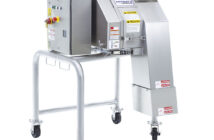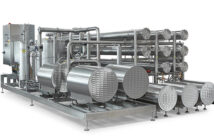Professor John Brooks is a member of the Foodtechnology advisory board and professor of food microbiology at the Auckland University of Technology.
Escherichia coli O157:H7 has now been joined on the FSIS most unwanted list by the “Big Six” – other strains of E. coli capable of producing Shigatoxin.
As we saw in May and June 2011 in the German outbreak, Shigatoxin-producing E. coli can cause a potentially deadly food borne infection that can leave survivors damaged for life.
The outbreak also resulted in huge economic loss in several European countries as fresh produce was either banned by authorities or shunned by consumers.
As of September 13 this year, these seven strains – O157:H7, O26, O11, O103, O121, O45 and O145 – will not be permitted in non-intact raw beef in USA.
They are considered to be “adulterants”.
The Food Safety and Inspection Service will begin testing for the STEC “big six” together with O157:H7 and enforcing the new policy on March 5, 2012.
If they are found to be present, the meat must either be destroyed or cooked before sale.
It has been a long road to get to this point.
In October 2009, Bill Marler, a US attorney, filed a petition with USDA/FSIS for an Interpretive Rule declaring all enterohaemorrhagic Shigatoxin-producing serotypes of E. coli, including non-O157 serotypes, to be adulterants within the meaning of the Federal Meat Inspection Act.
The new declaration is being hailed as a victory. Elisabeth Hagen, head of food safety at the Department of Agriculture, said that this was “one of the biggest steps forward in the protection of the beef supply in some time. We’re doing this to prevent illness and to save lives” – a worthy cause.
However, I have some concerns about this optimism. Will the reclassification of the Big Six make meat safer? I’m not so sure.
Certainly, if these bacteria are detected in meat, the product will not be allowed on the market unless it is diverted to cooked products. 
This may be a challenge for the meat processors – since 1994, O157:H7 in raw ground beef has been declared an adulterant with zero tolerance by FSIS.
In October 2007, the Topps Meat Company recalled 21.7 million pounds of ground beef, bringing the total recalls in the US between April and October 2007 to over 30 million pounds of red meat, mostly hamburger.
A company manufacturing frozen hamburger patties is unlikely to have the capacity to redirect this much meat to a cooking process and there may be difficulties in finding a buyer for the product, so it may have to be destroyed.
Secondly, as far as I am aware, there is no requirement for processors to test for these bacteria. If this situation doesn’t change, the first indication that something is wrong may still be when people start showing up at the hospital with gastrointestinal disease.
Thirdly, the cost of testing is currently very high and the testing may take up to five days, even when things go well.
That will increase the costs of storage if product has to be held until cleared by testing.
Meat industry managers are worried that promised rapid testing kits will not be ready and validated by March 2012.
Finally, testing for the Big Seven will miss any Shigatoxin-producing non-members, as was the case with the German outbreak of O104:H4.
The FSIS move is a good start and is motivated by good intentions. 
However, testing of products with very low levels of contamination is subject to huge uncertainty and cannot guarantee that the food is safe to consume. The only way that safety of food can be improved is by development of risk management plans and rigorous application of critical control points throughout the food chain, including food service outlets, i.e. farm to fork.
John Brooks is a microbiologist, specialising in food microbiology. He trained in London under John Pirt and on graduation spent a period of time working at ICI in Billingham, helping to develop the methanol-based single cell protein process. He then moved to Sydney to do a PhD in biochemical engineering, continuing his work on C1 metabolism. After finishing the PhD, John took up a position at Massey University, teaching food microbiology and remained there for 30 years, eventually specialising in biofilm research. During that time, he supervised a number of Masters and PhD projects and consulted extensively for the food industry. He is a member of the NZFSA Science Academy, which provides specialist expertise and advice to the Authority.




























































































